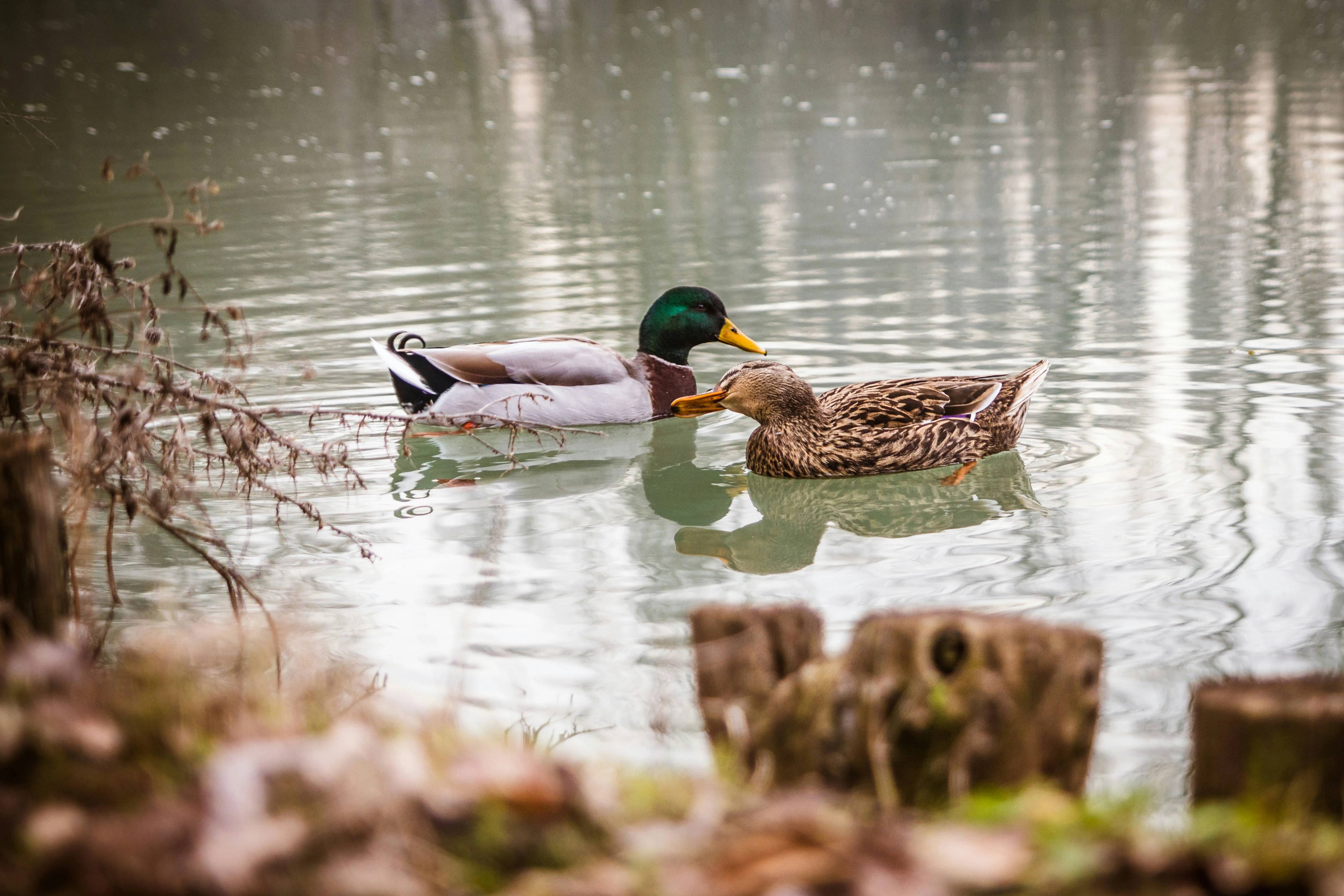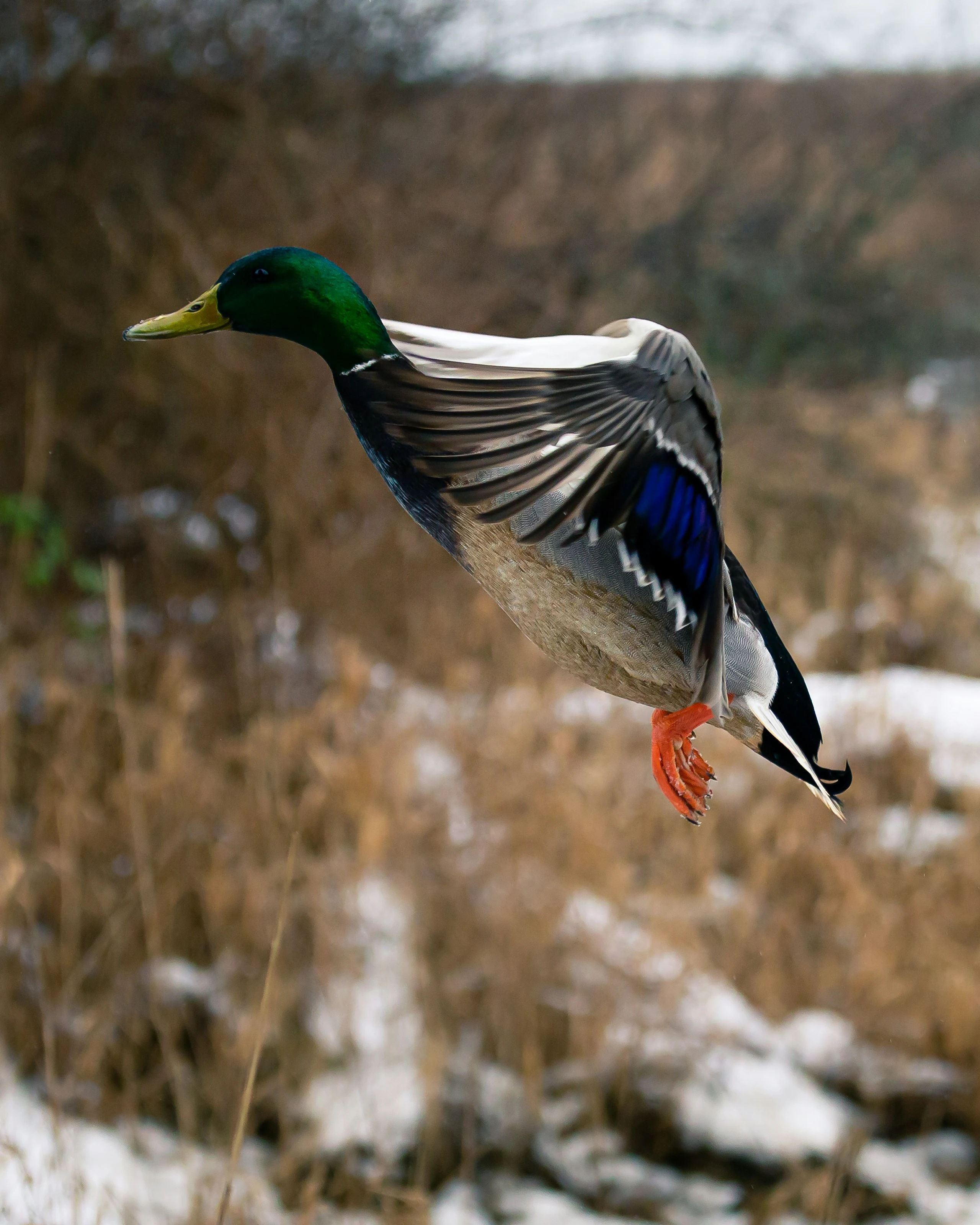Mallards
Most Common of the Waterfowl
Waterways echo with soft quacks as heads of brilliant green and muted brown meet and swim, their soft feathers dampening the sound of their passing. Every so often, as they skim the top of the water, a head drops, and a small fish is caught in a beak as the head rises again. These birds will eat whatever catches their fancy, lazily snapping their dinner from the surface of the water or right below. It is a simple existence, one that bothers few but allows the majesty of these creatures to be viewed by those that choose not to interrupt the soft sounds of the water that these birds call home.
Mallards are by far the most common waterfowl found throughout Isekai, calling most waterways of the world home, even in the harshest of climates. One of few non-migratory birds, these birds prefer to claim areas of wetlands to flock to and live throughout the year where food is plentiful and they may be left alone. A medium-sized duck, these creatures are often what most people think of when the name duck is brought up, causing the name Mallard to be synonomous with wild duck in many cases.
Those who have crossed paths with mallard know they have found a place of peace, one that is rarely interrupted by noise or chaos. These birds are hearty and live in some of the oddest places, but their populations mingle with other wild ducks to create hatchlings that are better suited to their habitat and conditions. Records show that these birds are some of the most heavily documented, living across the world since the earliest days when the races began dabbling in taxonomy and other related sciences.
Basic Information
Pair of Mallards
Male and female Mallards vary greatly in color. Males are more colorful, using their color to attract possible mates. Females are more muted in color to blend in with their surroundings when sitting on their nests.
Anatomy
Mallards are medium-sized waterfowl, often ranging from twenty to twenty-six inches from bill to tail. These birds can weigh upwards of four pounds, but their wingspan of roughly thirty to forty inches is considered somewhat impressive amongst waterfowl for their size. Mallard ducks are often considered to be the largest ducks in many areas. Male and female mallards vary greatly in color, with males having brighter colors and females more muted to hide in the underbrush. A glossy green head, a white ring around the neck, and a purplish-brown breast are markers of an adult drake. Females are predominantly of a mottled brown color, allowing them to hide easily while sitting on their nests.Genetics & Reproduction
Mallard ducks are a varied breed as they often mate with wild ducks to better develop their flocks for the areas in which they live. Females will lay eight to thirteen eggs over many days. After a month, these eggs will hatch, and ducklings can swim, although another two months must pass before they can fly.Additional Information
Geographic Origin and Distribution
Mallards are one of the few waterfowl that can be found in nearly every area of the world, including waterways in the Neither Tundra, Edge Tundra, and Either Tundra. These ducks are considered some of the heartiest of waterfowl and can flourish where others cannot, breeding with other wild ducks to create hatchlings and offspring that may better survive. Flocks do not range far unless they are pushed from their homes by predators or lack of food.
These ducks can be preyed on by other large birds, but mallards also choose their home so that the water is not too deep, as creatures of the depths may prey upon the birds as they skim the surface of the water for their food. It is common to see these ducks live in areas with other species of duck and intermingle their flocks if it is beneficial.
In Flight
While Mallards are non-migratory birds and spend a great deal of time on the water, these birds will still fly to various locations in their range and weather and their fancy permits. They tend to stay in a small range with their flock but will fly greater distances if pushed from their normal habitat.





Ducks any time, every day!